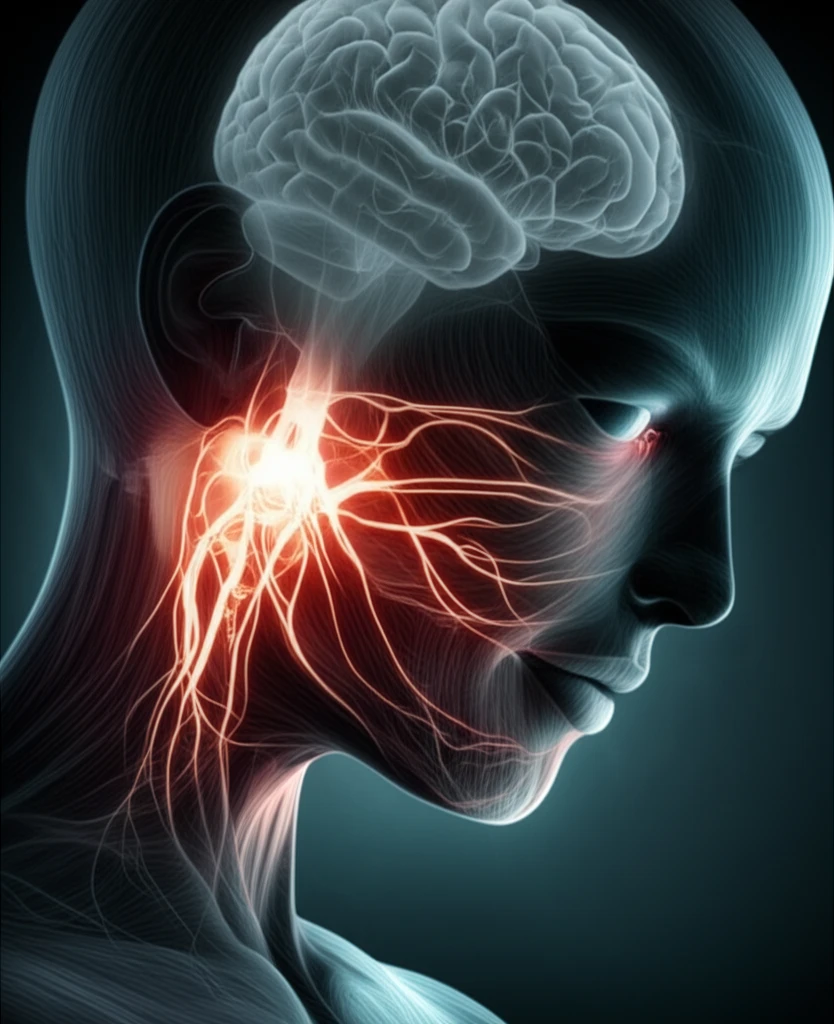
Unmasking TMD: How Pain-Related Disability Impacts Your Health Beyond Jaw Pain
"New research reveals the surprising connections between temporomandibular disorders (TMD), comorbid pains, and overall quality of life, paving the way for more effective and personalized treatment strategies."
Temporomandibular disorders (TMD), affecting the jaw joint and muscles, are a common source of pain and discomfort. While many experience temporary relief with simple treatments, a significant number grapple with persistent and complex pain. Recent studies highlight the intricate relationship between TMD and other health conditions, emphasizing the need for a comprehensive approach to diagnosis and treatment.
This article explores the findings of a recent study investigating the connections between TMD, comorbid pains (other co-occurring pain conditions), general health, and overall quality of life. By understanding these relationships, individuals can better manage their TMD and improve their overall well-being. This research emphasizes the importance of looking beyond just the jaw when addressing TMD.
The study, conducted in a primary care setting, classified TMD patients based on their pain-related disability using the Graded Chronic Pain Scale (GCPS). This scale measures both the intensity of pain and its impact on daily life. Researchers then compared these groups in terms of comorbid pain conditions, existing medical diagnoses, and quality of life scores.
The Ripple Effect: How TMD Disability Impacts Your Body and Mind

The study revealed a clear link between the severity of TMD-related disability and the presence of other health issues. Patients with higher levels of disability reported a greater number of comorbid pain conditions, such as headaches, neck pain, and back pain. They also experienced these pains as more intense and disruptive to their daily lives. Think of it as a ripple effect: the initial pain of TMD can trigger or worsen other pain conditions throughout the body.
- More Comorbid Pains: Higher disability groups reported significantly more instances of headaches, neck pain, back pain, and other pain conditions.
- Increased Pain Intensity: Participants with greater disability experienced their comorbid pains as more intense and interfering with daily activities.
- Higher Medical Diagnoses: The high-disability group had a significantly higher number of reported medical diagnoses, including endocrine, neurosensory, and cancer-related conditions.
Taking Control: Steps Towards Managing TMD and Improving Your Health
The findings of this study provide valuable insights for individuals seeking to manage their TMD and improve their overall health. The GCPS-related disability scoring system, used in the study, can serve as a simple screening tool to identify patients who may be at higher risk for comorbid pain conditions and reduced quality of life. This allows healthcare professionals to tailor treatment plans to address the specific needs of each patient.
If you're experiencing TMD symptoms, it's crucial to seek a comprehensive diagnosis that considers not only the jaw joint but also your overall health. Discuss any comorbid pain conditions or existing medical diagnoses with your doctor or dentist. A multidisciplinary approach, involving physical therapy, pain management techniques, and psychological support, may be necessary to effectively manage your TMD and improve your quality of life.
Remember, TMD is more than just jaw pain. It's a complex condition that can have far-reaching effects on your physical and mental well-being. By understanding the connections between TMD, comorbid pains, and overall health, you can take proactive steps to manage your condition and improve your overall quality of life.
